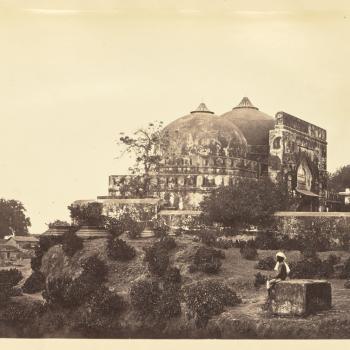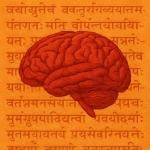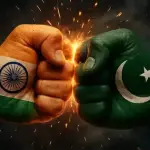India Pakistan Timeline Since 1947
Basic Stats
Population of pre-Independence subcontinent: 400 million
The British had ruled India (as a whole or parts of it) for 190 years officially, since the 1757 Battle of Plassey.
Lead up to Partition
The idea of Pakistan was as a homeland for Muslims, thought of in the late 1930s.
An act of British parliament proposed a date for the transfer of power into Indian hands in June 1948. Plans for a partitioned India were announced by British PM Clement Attlee and Mountbatten on June 3, 1947. It is notable that they did not even use the word Pakistan once during their speech.
The date for the transfer of power was summarily advanced to August 1947, in the words of the BBC “at the whim of the last viceroy, Lord Louis Mountbatten.” This left many issues unresolved at the end of colonial rule.
Mountbatten exacerbated difficulties by focusing largely on Jinnah’s Muslim League and the Indian National Congress led by Nehru. The two parties’ representative status was established by Constituent Assembly elections in July 1946, but fell well short of a universal franchise.
Jinnah had been demanding various parts of the subcontinent be separated into a new nation. Two key provinces were Punjab and the North-West Frontier Province. However, in the 1946 elections, neither of these provinces voted for the Muslim League, going to the Unionist party and the Indian National Congress (INC) respectively.
The Muslim League worked to undermine the interests of Hindus and Sikhs in these two provinces, to prove that these provinces wanted to be part of the Muslim nation. Communal tensions flared up and a few thousand Hindu and Sikh refugees moved to neighbouring J&K. It is said that the plight of these refugees was one reason the Raja of J&K was reluctant to sign an accession to Pakistan, fearing what would happen to Kashmiri Hindus.
Indian Independence on Aug 15. Pakistan’s on Aug 14. However, the British did not actually announce where the border was till August 17, thereby shifting the blame for what ensued off their shoulders.
The 7400-km border (3300-km in West and 4100-km in East) was drawn by a committee led by British lawyer, Cyril Radcliffe in 40 days. He had little knowledge of India, and used out-of-date maps and census materials. 1700 kms separated East & West Pakistan.
The result was that communities, families and farms were cut in two.
Partition
Partition is one of the largest human migrations ever seen. 15 million people migrated, many by foot. Between one and two million dead.
Some British soldiers and journalists who had witnessed the Nazi death camps claimed Partition’s brutalities were worse.
83,000 women were raped or abducted on both sides.
34 million Muslims stayed in India. There were 300 million Hindus. Pakistan had about 17 million non-Muslims and 58 million Muslims.
Kashmir Pre & Post-Partition
His Majesty’s Government made it clear that partition applied only to British-controlled India and not to Princely States. Authority in these states devolved to the rulers, who could decide to accede to either nation or remain independent.
Only three of the princely states were still ambivalent about integration by August 1947, and had not signed the formal Instruments of Accession. These were Hyderabad, Kashmir and Junagad.
The Raja of J&K preferred to stay independent. In 1946, the National Conference party’s Sheikh Abdullah had led the Quit Kashmir movement against the Raja and was thrown in jail by the princely government.
Prior to independence, Muslims in J&K supported the National Conference which allied with the Congress, or the Muslim Conference allied with the Muslim League. National Conference was majorly in Kashmir Valley and Muslim Conference majorly in Jammu province. Both parties were not in favour of accession and preferred that the public should decide on accession. Most Hindus were in Jammu, and they supported an RSS-allied party.
In early 1947, Muslims in Poonch, one of the border provinces of the princely state of J&K were instigated to rebel with the backing of Muslim Conference leaders. Poonch had been rebelling on & off since the early 1900s, demanding a let up on taxation. This was used to create a more general rebellion against the Raja, with many leaders making speeches in favour of acceding to Pakistan.
The Raja’s heavy hand in quelling the rebellion contributed to alienating the population, many of whom had close family ties to Rawalpindi and nearby areas that later went to Pakistan.
In August 1947, as India and Pakistan became independent, Muslim Conference leaders in Poonch pitched up the rebellion, seeking to overthrow the Raja and accede to Pakistan. This unnerved the Maharaja and his stance of Independence. He began talks with the Congress.
Muslim Conference leaders in Poonch notified Pakistani authorities, asking them to act, otherwise Kashmir would be lost to them.
Pakistan’s military leadership began planning to occupy Kashmir as early as August, independent of the civilian leadership.
In September, the Raja of J&K had sent a letter to the Indian government saying that he was willing to accede. Nehru insisted that this would happen only if Sheikh Abdullah was released and made Prime Minister of Kashmir. The king rejected this.
In October 1947, Pakistan decided that an “unofficial” military action was warranted to support the revolters and J&K in acceding to Pakistan, and sent 20,000 tribals (who were not from the army) from the Northwest Frontier Province and non-uniformed soldiers from Subhash Chandra Bose’s former INA into J&K, which precipitated the first Indo-Pak war.
A provisional Azad Kashmir government was declared, with its seat in Rawalpindi.
The Maharaja acceded to the Indian Union, agreeing to make Abdullah the PM of J&K. India then airlifted troops into Srinagar. Nehru offered to conduct a plebiscite later on to determine whether Kashmir should accede to India. Pakistan was against a plebiscite at this time, a total opposite to their later stand.
After this, Pakistan officially intervened and fighting began between the two nation’s armies, which stabilized around the Line of Control.
Mountbatten urged Nehru, about ‘the overwhelming need for caution and restraint’; he stressed ‘how embroilment in war with Pakistan would undermine the whole of Nehru’s independent foreign policy and progressive social aspirations.’
On Mountbatten’s advice, Nehru decided to lodge a complaint to the UN Security Council instead of counter-attacking Pakistani forces and taking back the one-third of Kashmiri territory now in Pakistani hands. Sardar Patel was against it. Patel tendered his resignation, but was convinced by Gandhi to take it back, and he officially stayed out of Kashmir issues after that.
This UN complaint was not an invitation to mediate in Kashmir’s accession to India. It was a complaint to the UN to ask Pakistan to cease aggression on Indian territory.
Counter charges were made by Pakistan that India’s was a persistent attempt to undo the Partition scheme and that the acquisition by India of Kashmir’s accession was through fraud and violence.
On both sides, non-army forces killed civilians. Pashtun tribesman killed around 50,000 Hindus in the areas occupied by Pakistan. In Jammu, RSS & Akali forces killed a similar number of Muslims, supported by the Raja’s state forces.
India-Pak Timeline
Jan 1949: The war officially ended in 1949 January 1, when the UN arranged a ceasefire. The UN Security Council (UNSC) resolution declared that “The question of the accession of the State of Jammu and Kashmir to India or Pakistan will be decided through the democratic method of a free and impartial plebiscite.”
This was despite the Maharaja’s accession being perfectly legal under the British system of governance.
This was also despite India’s complaint initially being about Pakistan’s aggression. It did not have anything to do with the status of Kashmir being a part of India or not. The reason for this is because the Security Council’s attitude towards Kashmir was largely shaped by the British delegation led by the Commonwealth secretary Philip Noel-Baker.
Noel-Baker believed that Britain had already alienated the Arabs on the question of Palestine and Israel and they might be further inflamed if Britain wobbled on Kashmir. Baker stated on record, “It was important to avoid the danger of antagonising the whole of Islam by appearing to side with India against Pakistan.”
The UNSC resolution required two important conditions for the plebiscite: that newly introduced residents in the areas currently under Pakistani occupation withdraw from these areas before the plebiscite. This was a reference to tribals and numerous other Pakistani nationals who had been brought in by Pakistan in the intervening months. Pakistan was also required to pull all troops out of Kashmir, including from the portion they had occupied. After this, India was to withdraw the bulk of its forces from Kashmir, retaining those that were needed for day-to-day security operations.
India agreed to the UNSC’s resolution provided the first two conditions were met. Pakistan however stated that while Pakistan could withdraw forces from the areas under its control, the area of Azad Kashmir was under the governance of Azad Kashmir government, which would have to decide whether it wanted to withdraw.
Pakistan continued to place many such impossible conditions in following years, which frustrated any possibility of a plebiscite. In the meantime, Sheikh Abdullah formed the government, and in 1951, a constituent assembly was formed in J&K to decide on a constitution for J&K.
An important point is that the UNSC resolution was non-binding on both countries. It was a suggestion and not a directive.
1954: The accession of Jammu and Kashmir to India is ratified by the state’s constituent assembly. The Constitution of India grants special status to Jammu and Kashmir, and it is the only state in India to have a separate constitution.
Article 370 of the Constitution of India states that Parliament of India and the Union Government jurisdiction extends over Defence, Communication, Finance and Foreign Affairs, with respect to State of Jammu and Kashmir, and in all other matters not specifically vested in Federal governments, actions have to be ratified by state legislature. Till 1965, head of the J&K government was called Prime Minister of J&K.
Ambedkar refused to draft Article 370. It was drafted by Nehru’s friend Gopalaswami Ayyangar. Article 370 is stated within the constitution as a temporary provision, and was applicable only till J&K drew up a constitution of its own. However, the J&K constituent assembly drew up a constitution and then dispersed without amending or abrogating Article 370.
Article 370 states that: Besides Defence, Communication, Finance and Foreign Affairs, other constitutional powers of the Central Government could be extended to the State only with the concurrence of the State Government.
The State Government’s authority to give this ‘concurrence’ lasted only until the State Constituent Assembly was convened. Once the State Constituent Assembly finalised the scheme of powers and dispersed, no further extension of powers was possible, even through Presidential order.
Article 370 could be abrogated or amended only upon the recommendation of the State’s Constituent Assembly.
However, since the State Constituent Assembly officially dispersed, legally speaking there is no way the Indian Union can change Article 370 in anyway, even to abrogate it, unless perhaps a new constituent assembly was assembled.
For this reason, all changes to the applicability of India’s laws on J&K have been done as an amendment to the Presidential order of 1954, the last order before the dispersal of J&K’s Constituent Assembly. Presidential Order of 1954 extended Indian citizenship to all J&K subjects, but also inserted Article 35A in the Indian constitution, which empowered the state’s legislature to legislate on the privileges of permanent residents with regard to immovable property, settlement in the state and employment. This is the amendment that does not allow non-J&K residents to purchase property in J&K.
Article 35A was not floated by Parliament or passed through it. It was decreed directly by Presidential order, and is therefore being considered by many as invalid. A case is pending before the Supreme Court on this. This article also holds that if a J&K man marries a non-J&K woman, he and his descendants are considered J&K subjects. However, if a J&K woman marries a non-J&K man, her descendants are not J&K subjects. A case has been filed in the Supreme Court arguing that Article 35 violates the principles of equality.
Since 1954, 47 amendments have been made to the Presidential order of 1954, to extend 94 of the 97 subjects in the Union List (the powers of the Central Government) to the State of Jammu and Kashmir, and 260 of the 395 Articles of the Constitution of India. These were done with concurrence of the State Government without any Constituent Assembly. Some have called this the erosion of Article 370.
In April 2018, a bench of the Supreme Court ruled that Article 370, by virtue of its presence in the Constitution for so many years, is now permanent. However, on 19 February 2019, the Supreme Court agreed to look into a public interest litigation (PIL) challenging Article 370. The PIL, filed by BJP leader and Supreme Court advocate Ahwini Upadhyay, said the court must decide on the President of India’s jurisdiction and thereby delineate who exactly can rule over Jammu and Kashmir.
1957: The Jammu and Kashmir constituent assembly approves a constitution. Section 3 of this Constitution laid down that ‘The whole state of Jammu and Kashmir is and shall be an integral part of the Union of India,’ and, this Constitution itself prohibits any amendment of its Section 3.
1960: India and Pakistan sign a World Bank-brokered Indus Water Treaty governing six rivers, or three rivers each. It is the only India-Pakistan treaty that has held. India has so far been allowing its own share of water to also flow into Pakistan. On Sep 21, India announced that it would no longer allow this and is constructing a dam to divert that water to Punjab and J&K.
1963: In the aftermath of the 1962 Sino-Indian War, India and Pakistan held talks regarding the Kashmir dispute under the auspices of the British and the Americans. But no agreement could be reached between the two countries. As a result of the failure, Pakistan referred the Kashmir issue to the UNSC again.
Pakistan ceded 800 sq km of territory in North Kashmir to China adjoining the Siachen Glacier (which was unoccupied at the time).
When, at the instance of Pakistan, the Kashmir issue came up again in the Security Council in 1964, the context had therefore changed because of this transfer of land. It was the then education minister of India, Mahomedali Currim Chagla, who told the Council that the resolutions of the United Nations had lapsed and that on no account would India agree to hold a plebiscite. As Chagla asked in the Council, did Pakistan expect that while Pakistan continued its intransigence, India would sit with folded hands and do nothing whatever in Kashmir to improve the lot of its people? A plebiscite, he said, is only one mechanism for ascertaining the wishes of a people; there are other methods that are equally efficient.
Aug 1965: A second war begins over Kashmir, ending a month later in another UN-mandated ceasefire. PM Lal Bahadur Shastri dies a week after signing the ceasefire in Tashkent.
Dec 1971: A third war is fought, this time as India supports secessionists in East Pakistan. The war ends with the creation of Bangladesh.
July 1972: The countries sign an accord for the return of tens of thousands of Pakistani prisoners of war, known as the Simla Accord. A key point is that both countries agreed to work out any issues bilaterally. This effectively threw out the role of the UN in handling the dispute.
May 1974: India conducts a nuclear test, becoming the first nation to do so that’s not a permanent UN Security Council member.
Dec 1989: Armed insurgency begins in Kashmir. India accuses Pakistan of giving weapons and training to the fighters. Pakistan says it offers only “moral and diplomatic” support. The insurgency was fueled in part by a large influx of “mujahideen” who took part in the Afghan war against the Soviets in the 1980s.
Jan 1990: On 4 January 1990, a local Urdu newspaper, Aftab, published a press release issued by Hizb-ul-Mujahideen, asking all Pandits to leave the Valley immediately. Another local paper, Al Safa, repeated this expulsion order. Explosive and inflammatory speeches were broadcast from the public address systems of the mosques frequently. The sense of vulnerability and insecurity was exacerbated by attacks on prominent Hindu politicians, postings of hit lists with names of specific Hindu individuals and various violent episodes in Srinagar and other places. This led to mass migration of Pandits out of the Kashmir valley.
Of 3-6 lakh Hindus living in Kashmir valley in 1990, only 2000-3000 remain in 2016.
Early 1990s: Considerable lobbying by Pakistan strengthened the view that India was an aggressor in Kashmir and was conducting human rights abuses.
On October 28, 1993, Robin Raphael, then US Assistant Secretary (South Asia), said that the US did “not recognise [the] instrument of accession as meaning that Kashmir is forever an integral part of India”. US Ambassador to Islamabad Robert Oakley had said on August 11, 1991: “We do not accept the Indian claim that this (Kashmir) is a part of India”.
Mar 1993: 12 bomb blasts in Mumbai kill 259 people.
1994: The International Commission of Jurists, an NGO with consultative status in the UN, visited Kashmir & PoK. It condemned India, Pakistan and militant groups for alleged human rights violations in J&K
ICJ urged Pakistan to stop the smuggling of weapons across a porous border and halt training of militant groups. ICJ urged Islamabad to give full democratic rights to the 1.2 million inhabitants of the Pakistan-controlled northern areas of J&K. ICJ said the people of J&K had acquired a right of self-determination when India was partitioned and that the right was neither exercised nor abandoned. ICJ cautioned that holding a single, statewide referendum could lead to outright civil war. Indian government slammed the ICJ statement as having a “blatant bias”.
May 1998: India detonates five nuclear devices in tests. Pakistan detonates six. Both are slapped with international sanctions.
Feb 1999: Atal Bihari Vajpayee rides a bus to the Pakistani city of Lahore to meet with Nawaz Sharif, and sign a major peace accord – the Lahore agreement. At this very time, Pakistani chief of armed forces, Pervez Musharraf is infiltrating troops into Kargil area.
May 1999: Conflict erupts in Kargil as Pakistani forces and militants occupy Himalayan peaks. India launches air and ground strikes. The US brokers peace.
Dec 1999: Flight IC 814 hijacked from Nepal to Kandahar, where JeM negotiates the release of three terrorists including Masood Azhar.
Aug 2000: India begins peace talks with Hizbul Mujahedeen, in Srinagar, after Hizbul declares a ceasefire. In five days, Hizbul Mujahedeen calls off its ceasefire and orders its forces to resume fighting against Indian troops.
May 2001: Vajpayee and Pakistan’s President Pervez Musharraf meet in the Indian city of Agra, but reach no agreements.
Oct 2001: JeM Insurgents attack the legislature building in Kashmir, killing 38 people.
Dec 2001: JeM & Lashkar-e-Taiba gunmen attack India’s Parliament, killing 14. India deploys troops full-scale to its western frontier with Pakistan. The standoff ends in October 2002 after international mediation. Brajesh Mishra, then Principal Secretary to the PM says India was ready to launch an all-out war, and backed off only on what they thought was a firm assurance from the US to put pressure on Pakistan.
Jan 2004: Musharraf and Vajpayee hold talks, launching bilateral negotiations to settle outstanding issues.
Jul 2006: Seven bomb blasts take place in 11 minutes on Mumbai’s suburban railway. 209 people are killed. ISI was blamed for this.
Feb 2007: A train service between India and Pakistan, the Samjhauta Express, is bombed in northern India, killing 68.
2008: India joins a framework agreement between Turkmenistan, Afghanistan and Pakistan on a $7.6bn gas pipeline project.
Jul 2008: ISI-planned bomb attack carried out on Indian embassy in Kabul, which kills 58 and injures another 141.
Oct 2008: India and Pakistan open a trade route across Kashmir for the first time in six decades.
Nov 2008: Gunmen attack Mumbai, killing 166 people. India blames Pakistan-based terror group Lashkar-e-Taiba.
2009: The Pakistani government admits that the Mumbai attacks may have been partly planned on Pakistani soil, while vigorously denying allegations that the plotters were sanctioned or aided by Pakistan’s intelligence agencies.
Nov 2010: Jammu and Kashmir was dropped from a list of disputes under the observation of the UN Security Council during discussion. This was not an official statement of the UN, but more of a tacit statement made by not including J&K in the list of disputes to be resolved.
Aug 2011: A Dubai-based NGO filed a report with the Indian State Human Rights Commission about the presence of over 2000 unmarked graves near the Indian-side of the LoC. This report was picked up by international media and made out to look like the discovery of mass graves, possibly of people who had disappeared since insurgency began and might have been killed in fake encounters by the armed forces.
Omar Abdullah, who was CM, stated in the Assembly, “What we are talking about is unmarked graves. When we talk about mass graves, it has international connotations. People buried in unmarked graves have been buried with due religious rites. I want to make it clear with authority that all the disappeared persons are not buried in these graves. Some of the disappeared persons are driving taxis or have set up some businesses across the Line of Control.
Another thing I want to make absolutely clear is whether anyone can with authority say that all those buried in the unmarked graves were killed by the security forces? I can say with authority that some of the persons buried in these unmarked graves were killed by the militants. Why are the security forces treated as guilty unless they prove themselves to be innocent? Why does not this perception hold good for the militants? In an encounter in the Gurez, 14 foreign militants were killed and buried under Islamic rites after maintaining the records of all of them properly. 2090 foreign militants killed during the last 22 years in Poonch and Rajouri districts are buried there.”
Feb 2013: JeM’s Afzal Guru hanged for his role in the 2001 Parliament attacks.
May 2014: Narendra Modi invites Pakistani counterpart Nawaz Sharif to New Delhi for his swearing-in.
Mar 2015: BJP is sworn into government in Kashmir for the first time in coalition with People’s Democratic Party, with Mufti Mohammad Sayeed as chief minister.
Jul 2015: Yakub Memon hanged for his role in 1993 Mumbai blasts.
Apr 2016: Mehbooba Mufti becomes chief minister following the death of her father Mufti Mohammad Sayeed.
Dec 2015: PM Modi makes a surprise visit to the Pakistani city of Lahore on Sharif’s birthday and the wedding of his granddaughter.
Jan 2016: Six gunmen attack Pathankot air force base, killing seven soldiers in a battle that lasted nearly four days.
Jul 2016: Soldiers kill Kashmiri terrorist and Hizbul Mujahideen leader Burhan Wani. Months of protests and a spike in local terrorist recruitment follow. 25 schools were burnt down in the five months of protests.
Sep 2016: Terrorists sneak into an Indian army base in Kashmir’s Uri and kill 18 soldiers. Four attackers are also killed. 11 days later, Indian Army carried out “surgical strikes” to destroy terror launch pads across the Line of Control in Pakistan.
India-Pak Economic Ties Before 1965
In 1948-1949, India accounted for 20% of Pakistan’s exports, and more than 50% of its imports.
The two countries signed 14 bilateral agreements.
While Pakistan has not granted the Most Favored Nation status to India today, in 1957, Pakistan had actually granted something equivalent. According to the agreement, India was to be given “treatment no less favourable than that accorded to the commerce of any third country.”
Pakistani banks had 9 branches in India and 1 Indian bank had a Pakistani branch pre-1965.











